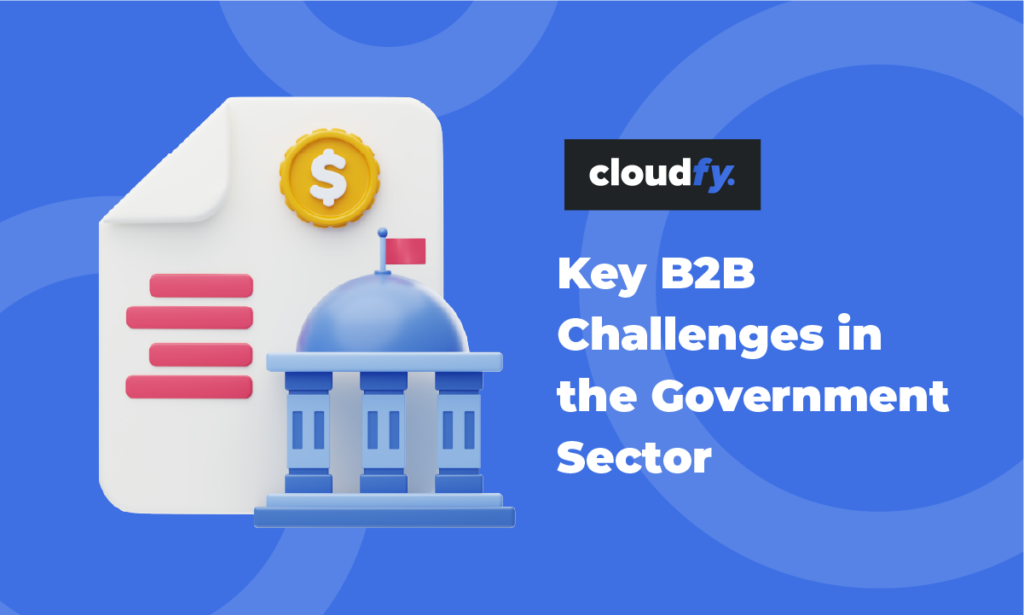In today’s digital age, having a strong online presence is crucial for B2B businesses to thrive and succeed. A well-optimized can be a powerful tool for generating leads and boosting conversions. Having great search engine optimization will make sure your business is discovered online. Excellent content will build your brand and give your buyers confidence. To get the best return on your marketing investment, the next step is to secure those all-important sales.
However, with fierce competition in the online space, it’s essential to implement effective strategies to stand out and capture the attention of potential clients. Many business to business (B2B) companies feel that their online conversion rate should be better. Here are some recommendations to help you deliver great user journeys that will improve your sales and customer engagement. In this blog, we will explore key techniques and best practices to optimize your B2B website and drive higher conversions.
Table of Contents
Understand Your Audience and Their Needs
Before diving into website optimization, it’s vital to thoroughly understand your target audience and their pain points. Conduct in-depth market research to identify your ideal customers, their preferences, and the challenges they face. Use this knowledge to tailor your website content and messaging to resonate with your potential clients.
Create a User-Friendly Interface
A user-friendly website is the foundation of successful conversion optimization. Ensure that your website’s design is clean, intuitive, and easy to navigate. Implement a responsive design that adapts to different devices, providing a seamless user experience across desktops, tablets, and mobile phones. Also, prioritize fast loading times, as users have little patience for slow websites.
Clear and Compelling Call-to-Action (CTA)
The primary goal of your B2B website is to encourage visitors to take action. Create clear and compelling CTAs throughout your site to guide users towards the desired conversion points. Use action-oriented language and place CTAs strategically on relevant pages. For example, “Get a Free Quote,” “Schedule a Demo,” or “Request a Consultation.”
Optimize Landing Pages
Landing pages play a crucial role in converting website visitors into leads. Each landing page should be tailored to a specific product or service, with a clear value proposition and relevant CTA. Keep the design simple and focused, avoiding distractions that might deter users from converting. A/B test different elements on your landing pages to identify what resonates best with your audience.
Implement Search Engine Optimization (SEO) Strategies
SEO is vital for driving organic traffic to your B2B website. Conduct keyword research to identify relevant and high-converting search terms within your niche. Optimize your website’s content, meta tags, and URLs to rank higher in search engine results. Create valuable blog posts, whitepapers, and case studies that not only improve your SEO but also showcase your expertise to potential clients.

Provide Valuable and Relevant Content
Content marketing is a powerful tool for engaging your audience and establishing your business as an industry authority. Publish high-quality content that addresses your customers’ pain points, offers solutions, and demonstrates your expertise. This content can include blog articles, ebooks, videos, infographics, and more. Valuable content builds trust and credibility, increasing the likelihood of conversions.
Use Social Proof and Testimonials
Testimonials, case studies, and client success stories are excellent forms of social proof that can instill confidence in potential customers. Showcase positive feedback from satisfied clients to highlight the value and quality of your products or services. Additionally, prominently display any industry certifications, awards, or partnerships that validate your business’s credibility.
Leverage Personalization
Personalization is a powerful tactic to enhance user engagement and conversions. Utilize data from user behavior and preferences to provide personalized product recommendations, content suggestions, and targeted marketing messages. Personalization makes visitors feel valued and understood, leading to a higher likelihood of conversion.
Streamline the Conversion Process
A complicated and lengthy conversion process can deter potential clients from completing their actions. Simplify the conversion process by minimizing the number of steps required to sign up, request a quote, or make a purchase. Implement guest checkout options and offer various payment methods to accommodate different customer preferences.
Monitor and Analyze Website Performance
Continuously track and analyze your website’s performance using web analytics tools. Pay attention to key performance indicators (KPIs) such as conversion rates, bounce rates, and user behavior. Analyzing this data will help you identify areas of improvement, allowing you to refine your optimization efforts and make data-driven decisions.
Focus on conversion
Many organizations focus on their search engine results to drive traffic to their site, but don’t put the same effort into optimizing their website for sales. Conversion rate optimization (CRO) includes design, navigation, on-site search functions, quality information, easy ordering and flexible payment processes. Your site will need to be fast too. If pages take too long to load, your visitors will go somewhere else.
Clarity is also essential. Make sure your buyers know immediately that they have found the right information. Make your call to action clear too – whether it’s to make a purchase or to download a value-added research report. When these features are successfully combined, your sales results will improve.
Simplified checkout
You might be surprised to discover that one in five B2B companies can’t accept online payments. For those who can, a quarter of their customers could abandon their purchase because the checkout process is long or complicated.
Features such as easy payment options and personalized promotions for conversion pages will make a difference. A well-designed online order form is the very least you can do to improve your conversion rate.
Over half of the purchases that are abandoned at the checkout are on smartphones and tablets, so it’s important to make sure that the performance of your checkout is good on every platform and device.
Know your buyers
It’s important to understand your buyers and their priorities so that you can deliver an online journey that meets their needs.
Buyers will become frustrated if your site fails to offer them specific and relevant information. In contrast, appropriate content that demonstrates the benefits of your product or service will give them confidence to buy from you. If you have a wide product range it can be challenging to deliver and maintain this high standard of content, but the sales rewards will be worthwhile.
Making the most of the information you can capture about your buyers’ behavior when they visit your site can be invaluable in understanding what’s needed. By tailoring and personalising your website’s content you will be much more likely to turn your visitors into purchasers. More than half of the companies that use data strategically to improve online personalization say that their conversion rates improve significantly.

Customer recommendations
The real-world comments of other buyers can be very influential. This type of user-generated content (UGC) will encourage buyers who are busy researching their options to become your loyal customers.
B2B businesses that go beyond testimonials and star ratings and include customer reviews and social media feedback on their websites are very likely to improve their conversion rates.
Capturing the real difference that you have made in your customer’s own words, as part of case study for example, will be engaging. If possible, include measurable results to give the content authority and you will have a winning combination.
Optimizing your B2B website to boost conversions is an ongoing process that requires a deep understanding of your audience, their needs, and their online behavior. By creating a user-friendly interface, implementing effective CTAs, and providing valuable content, you can significantly improve your website’s conversion rate. Remember to leverage social proof, personalize the user experience, and streamline the conversion process to increase your chances of success. Consistent monitoring and analysis of website performance will ensure that your optimization efforts remain effective in the ever-evolving digital landscape. By following these best practices, your B2B website will become a powerful tool for generating leads and driving business growth.
With Cloudfy, control of all these CRO actions can be at your fingertips.
Talk to one of our experts to find out how to improve your online conversion rates.
Frequently Asked Questions
Optimizing your B2B website for conversions involves several key strategies. Understand your audience and tailor your content accordingly, create a user-friendly interface, implement compelling CTAs, and optimize landing pages. Leverage SEO techniques, offer valuable content, and showcase social proof to instill confidence in potential customers. Personalize the user experience and streamline the conversion process to facilitate easy purchases.
A user-friendly interface enhances the overall user experience, leading to higher engagement and increased conversions. When visitors can easily navigate your website, find relevant information, and complete desired actions without frustration, they are more likely to stay longer and convert into leads or customers. Responsive design and fast loading times are crucial elements of a user-friendly interface.
Social proof, such as testimonials, case studies, and customer reviews, can significantly impact potential clients' decision-making process. By showcasing positive feedback from satisfied customers and demonstrating the real-world benefits of your products or services, you build credibility and trust. Including customer recommendations and measurable results in your content can be particularly influential.
Personalization enhances user engagement by tailoring the website experience to individual preferences and needs. By utilizing data from user behavior, you can provide personalized product recommendations, content suggestions, and targeted marketing messages. Personalization makes visitors feel valued and understood, increasing the likelihood of conversion.
Continuous monitoring and analysis of your website's performance are critical for identifying areas of improvement. Use web analytics tools to track key performance indicators (KPIs) like conversion rates, bounce rates, and user behavior. Analyzing this data will help you refine your optimization efforts, make data-driven decisions, and ensure your website remains effective in the ever-evolving digital landscape.






